METAL FINISHING & TECHNOLOGICAL
Metal Finishing or Coating refer to protecting both metal and non-metal surfaces, but it has typically referred to the process of deposition of a layer of the metal on the surface of substrate or the process of conversion of a surface layer of atoms on a metal into an oxide film. Metal Finishing is carried out to obtain technologically important surface properties, these properties are: To improve corrosion resistance —» To improve surface hardness —» To improve heat resistance — To increase good thermal resistance — To increase good optical reflectivity — To provide good electrical and thermal conducting surface —» To make a stronger part/lighter part —» To decorate product appearance and the list goes on. Get a quote back within two hours from Xometry Finishing Services, a high quality AS9100-certified finishing shop. Then, get your parts shipped out within two days. There's no more efficient way to get your parts finished.
PLATING is a surface covering in which a metal is deposited on a conductive surface. Plating is used to decorate objects, for corrosion inhibition, to improve solderability, to harden, to improve wearability, to reduce friction, to improve paint adhesion, to alter conductivity, to improve IR reflectivity, for radiation shielding, and for other purposes. There are several plating methods, and many variations. In one method, a solid surface is covered with a metal sheet, and then heat and pressure are applied to fuse them (a version of this is Sheffield plate). Other plating techniques include electroplating, vapor deposition under vacuum and sputter deposition. ENS Technology offer full-service metal plating and finishing, specialty plating, numerous value-added services, and more.
ELECTROPLATING is a process of depositing a layer of any desired metal on another material by means of electricity. In electroplating, an ionic metal is supplied with electrons to form a non-ionic coating on a substrate. A common system involves a chemical solution with the ionic form of the metal, an anode (positively charged) which may consist of the metal being plated (a soluble anode) or an insoluble anode (usually carbon, platinum, titanium, lead, or steel), and finally, a cathode (negatively charged) where electrons are supplied to produce a film of non-ionic metal.
SPONSORED CONTENT
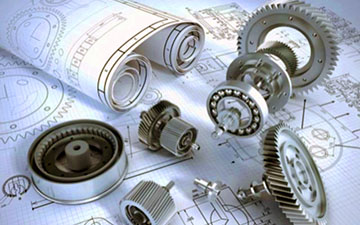
Your Service Flyer
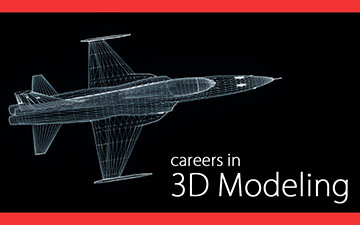
Your Event Invitation
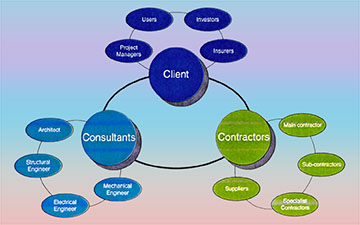
Your Promotion Ads

Your Logo & Brand
Support us and grow your business with us. My goal was to make technical information available with ready access to commonly needed resources, formulas, and reference materials while performing my work as a Technical Support Engineer. The businesses listed in Sponsored Content were carefully selected because of their uniqueness. However, non-sponsored selected ads will be rotated monthly.
ViBa Direct lacks an advisory board to do research and hire writers with the latest technical knowledge. Creating an effective advisory board requires more than an invitation. Without your sponsorship, this is not possible. If your company is interested in placing the company’s logo, brand, event invitation, and other promotional banners and flyers here or on any other pages, please reach out to Customer Service for more detail.
ELECTROLESS PLATING Electroless plating, also known as chemical or auto-catalytic plating, is a non-galvanic plating method that involves several simultaneous reactions in an aqueous solution, which occur without the use of external electrical power. The reaction is accomplished when hydrogen is released by a reducing agent, normally sodium hypophosphite (Note: the hydrogen leaves as a hydride ion) or thiourea, and oxidized, thus producing a negative charge on the surface of the part. The most common electroless plating method is electroless nickel plating, although silver, gold and copper layers can also be applied in this manner, as in the technique of angel gilding. Hammon Plating provides plating services for the application of materials such as nickel, gold, and more.
Cadmium plating: Cadmium plating is a tough and versatile coating. Cadmium is a soft white metal that, when plated onto steel, cast iron, malleable iron, copper, and powdered metal, functions as a corrosion protection coating. Furthermore, the corrosion products of cadmium are less significant that those of other plated coatings such as zinc. The coating is normally specified in thickness' between 5 and 25 µm depending on the severity of the atmosphere. Chromate post-treatment of the coating can increase coating life. Cadmium is electrodeposited on the metal article from an electrolyte solution of cadmium salts in barrels or vats.
Cadmium plating offers some technical advantages such as excellent corrosion resistance even at relatively low thickness and in salt atmospheres, softness and malleability, freedom from sticky or bulky corrosion products, galvanic compatibility with aluminum, freedom from stick-slip thus allowing reliable torquing of plated threads, can be dyed to many colors and clear, has good lubricity and solderability, and works well either as a final finish or as a paint base. Cadmium plating is widely used in some applications in the aerospace, military, and aviation fields. However, it is being phased out due to its toxicity
Chrome plating is one of the most reliable and widely used finishing processes in the industry. Hard Chrome plating is typically used to help resist abrasion and corrosion, improve a part’s wear, reducing friction, preventing galling, and is effective at providing excellent hardness and lubricity. It's non magnetic and easily applied over any finish, mimicking the base substrate. Industry Specs: QQ-C-320, AMS-QQ-C-320, AMS 2460, AMS 2406, MIL-STD-1501, ASTM B 177.
Copper plating plating is the process of electrolytically forming a layer of copper (up to 99% pure) on the surface of a Ferritic and Non-Ferritic Metals, including aluminum with a typical thickness of .0001-.001. Copper plating offers excellent conductivity and an economical price. For these reasons, design engineer makes heavy use of this finish for such industries such as aerospace and defense. A wide variety of metal substrates can take advantage of copper electroplating – including steel, stainless steel alloys, aluminum, brass and others. Due to its versatility, copper can be utilized in the industry as either a final plating solution or as an underplate for other deposits. Industry Specs: AMS 2418
Electroless Nickel plating (EN) is an auto-catalytic reaction that deposits an even layer of nickel-phosphorus or nickel-boron alloy on the surface of a solid material, or substrate, like metal or plastic. The process involves dipping the substrate in a bath of plating solution, where a reducing agent, like hydrated sodium hypophosphite (NaPO2H2 · H2O), reacts with the material's ions to deposit the nickel alloy. The metallurgical properties of the alloy depend on the percentage of phosphorus, which can range from 2–5% (low phosphorus) to 11–14% (high phosphorus). Unlike electroplating, it is not necessary to pass an electric current through the plating solution to form a deposit. Electroless plating prevents corrosion and wear, and can be used to manufacture composite coatings by suspending powder in the bath. Electroless nickel plating layers are known to provide extreme surface adhesion when plated properly. Electroless nickel plating is non-magnetic and amorphous. Electroless nickel plating layers are not easily solderable, nor do they seize with other metals or another electroless nickel-plated workpiece under pressure. This effect benefits electroless nickel-plated screws made out of malleable materials like titanium. Electrical resistance is higher compared to pure metal plating. Electroless nickel plating, also known as enickel and NiP, offers many advantages: uniform layer thickness over most complicated surfaces, direct plating of ferrous metals (steel), superior wear and corrosion resistance compared to electroplated nickel or chrome. Much of the chrome plating done in aerospace industry can be replaced with electroless nickel plating, again environmental costs, costs of hexavalent chromium waste disposal and notorious tendency of uneven current distribution favor electroless nickel plating.
Electroless Nickel plating creates an even layer regardless of the geometry of the surface – in contrast to electroplating which suffers from flux-density issues as an electric field will vary due to the surface profile and result in uneven depositions. Depending on the catalyst, EN plating can be applied to non-conductive surfaces. EN plating does not require electrical power, sophisticated jigs, or racks. The chemical replenishment is costly but can be monitored automatically, and complex filtration is not required. The lifespan of the chemicals, however, is limited. EN plating deposits an even coating of a desired thickness and volume, even in recesses and blind holes. The plating can have a matte, semi-bright, or bright finish. Because EN plating is porous, the quality of the material structure is inferior compared to electrolytic processes. Industry Specs: AMS-C-26074, AMS 2404, AMS 2405, ASTM-B-733, MIL-C-26074.
NỘI DUNG TÀI TRỢ
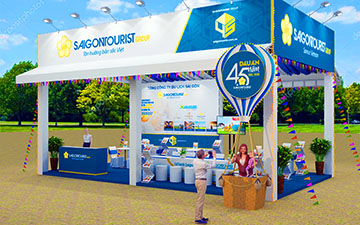
Quảng Cáo Dịch Vụ
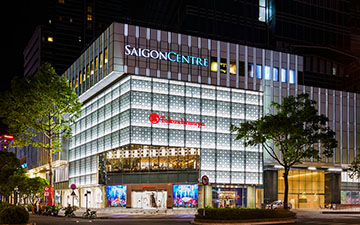
Quảng Cáo Sự Kiện
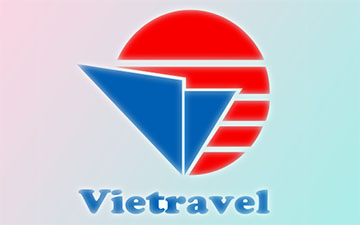
Quảng Cáo Khuyến Mãi

Biểu Trưng & Nhãn hiệu
Hỗ trợ chúng tôi và phát triển doanh nghiệp của bạn với chúng tôi. Mục tiêu của tôi là cung cấp thông tin kỹ thuật với khả năng truy cập sẵn sàng vào các tài nguyên, công thức và tài liệu tham khảo thường cần thiết trong khi thực hiện công việc của mình với tư cách là Kỹ sư hỗ trợ kỹ thuật. Các doanh nghiệp được liệt kê trong Nội dung được Tài trợ đã được lựa chọn cẩn thận vì tính độc đáo của chúng. Tuy nhiên, các quảng cáo liệt kê không được tài trợ sẽ được luân chuyển thay đổi hàng tháng.
ViBa Direct thiếu một ban cố vấn để thực hiện nghiên cứu và thuê các nhà văn với kiến thức kỹ thuật hiện đại. Việc tạo ra một ban cố vấn hiệu quả đòi hỏi nhiều hơn là một lời mời. Nếu không có sự tài trợ của bạn, điều này khó có thể thực hiện. Nếu công ty của bạn có nhu cầu quảng cáo, đặt biểu trưng, thương hiệu, biểu ngữ mời tham gia thảnh viên, hội viên cũng như các bích chương quảng cáo ở đây hoặc trên bất kỳ trang nào khác, xin vui lòng liên hệ với nhóm Dịch Vụ Khách Hàng Dịch Vụ Khách Hàng để biết thêm chi tiết.
Electrolytic Nickel plating improves a part’s wear, abrasion and corrosion resistance to begin with. Additionally, this coating provides a solution for the repair of components (machinable deposit used in the repair of components eliminating the remanufacturing costs). Electrolytic nickel plating, made of the purest nickel, provides a soft, ductile coating of approximately 20 Rockwell C hardness. In addition, it has outstanding corrosion resistance, solderability, magnetic characteristics and resists oxidation at high temperatures. Electrolytic nickel’s coating thicknesses of up to .250” is achivable. Electrolytic Nickel plating is ideal when a pure, stress free, machinable and corrosion resistant deposit is required. Industry Specs: AMS 2403, AMS 2423, AMS 2424, AMS QQ N 290, QQ N 290
Manganese Phosphate: American Society for Testing and Materials is a globally recognized leader in the development and delivery of voluntary consensus standards. ASTM International standards are the tools of customer satisfaction and competiveness for companies across a wide range of markets. ASTM standards are passports to a successful global trading strategy.
Nickel Sulfamate: EverySpec.com provides free access to over 55,000 Military, DoD, Federal, NASA, DOE, and Government specifications, standards, handbooks, and publications. This data warehouse includes standardization documents with the designations of MIL, MIL-STD, MIL-PRF, MIL-DTL, FED, CID, JANS, MS, AND, USAF, DID, CID, UCF, and FIPS, including their Amendments, Notices, and Supplements.
Silver plating: The Institute of Electrical and Electronics Engineers is the world's premier organization that serves technical professionals and students who are looking to both foster working relationships and gain access to the latest technical research and knowlege with rich offerings in publications, standards, certifications, and more.
Ti-Cad plating are used in the aircraft and other industries requiring cadmium deposits with superior corrosion resistance properties on high strength steel parts.
Tin plating: The tin-plating process is used extensively to protect both ferrous and nonferrous surfaces. Tin is a useful metal for the food processing industry since it is non-toxic, ductile and corrosion resistant. The excellent ductility of tin allows a tin coated base metal sheet to be formed into a variety of shapes without damage to the surface tin layer. It provides sacrificial protection for copper, nickel and other non-ferrous metals, but not for steel. Electro-tinning (tin-plating) is the process of thinly coating sheets of iron or steel. Considered non-toxic and non-carcinogenic, Tin plating is a typical material used in engineering, communications and consumer products. Additionally, this material offers an affordable finish, electric conductivity, and excellent corrosion protection. It is mostly used to prevent rust and oxidation in the manufacture of tin cans.
Tin is also widely used in the electronics industry because of its ability to protect the base metal from oxidation thus preserving its solderability. In electronic applications, 3% to 7% lead may be added to improve solderability and to prevent the growth of metallic "whiskers" in compression stressed deposits, which would otherwise cause electrical shorting. However, RoHS (Restriction of Hazardous Substances) regulations enacted beginning in 2006 require that no lead be added intentionally and that the maximum percentage not exceed 1%. Some exemptions have been issued to RoHS requirements in critical electronics applications due to failures which are known to have occurred as a result of tin whisker formation. Industry Specs: MIL-T-10727 (Type I), ASTM B545.
Zinc plating offers excellent corrosion resistance while remaining affordable. It is popular as an undercoating for many parts that need paint applied to them. However, surfaces must be clean or undergo passivation to prevent harmful oxidation (rust) or other materials from compromising it’s adhesion. Therefore, this coating is preferable for manufacturing, spot-welds or assembly parts because the trapping of toxic materials can occur in those instances.
Zinc-Nickel coating is also preferred in applications where the part or component is in contact with aluminum. It helps drastically reduce corrosion and is also able to withstand the higher temperatures associated with engines.
CHEMFILM or ALODINE, sometimes called aluminum chromate, Alodine or Iridite, is a chemical conversion coating that is used to passivate aluminum. It protects aluminum substrates from corrosion and serves as a base for organic coatings while leaving dimensions unchanged. Chemfilm is applied by dipping, spraying or brushing. It is sometimes applied alongside Type II Anodizing and can be used to repair minor damage to anodized surfaces (up to 5% of surface area per MIL-A-8625). The resultant coating is dependent on the substrate condition and not intended for decorative use. Chem Processing offers both trivalent (RoHS compliant) and hexavalent chromium based chem film. Chem film per MIL-DTL-5541 Class 3 is electrically conductive. The best corrosion protection is provided by chem film per MIL-DTL-5541 Class 1A. Industry Specs: MIL-DTL-5541, MIL-C-81706, AMS-2473, AMS-2474, AMS-C-5541, PN 14.12, PS 114, HS 240, WS 9030.
— Brush-on chemfilm is used in Aerospace/Aviation industry to repair of anodized surfaces and provide corrosion protection on all manner of aluminum aircraft components.
— In Defense/Military industry, chemfilm is used as a base coat for CARC (Chemical Agent Resistant Coating) paint on ordnance, vehicles and tactical equipment to provide protection againts chemical and biological weapons.
— In Maritime/Naval, chemfilm provides corrosion protection in saltwater environments.
— In Electrical Industry, chemfilm is used for corrosion protection on housings and covers.
Anodize and Alodine, while both are conversion coatings, chem film is much thinner than anodizing and is alsocreated by immersion but without use of electrical current. The coating provides corrosion protection and also is an excellent base primer for paints.
ANODIZING plays an important role in bridging the gap between the metallic and composite worlds. Anodizing is an electrochemical process that converts the metal surface into a decorative, durable, corrosion-resistant, anodic oxide finish. Aluminum is ideally suited to anodizing, although other nonferrous metals, such as magnesium and titanium, also can be anodized. Anodising increases resistance to corrosion and wear, and provides better adhesion for paint primers and glues than bare metal does. Anodic films can also be used for several cosmetic effects, either with thick porous coatings that can absorb dyes or with thin transparent coatings that add interference effects to reflected light. Anodising is also used to prevent galling of threaded components and to make dielectric films for electrolytic capacitors. The anodic oxide structure originates from the aluminum substrate and is composed entirely of aluminum oxide. This aluminum oxide is not applied to the surface like paint or plating, but is fully integrated with the underlying aluminum substrate, so it cannot chip or peel. It has a highly ordered, porous structure that allows for secondary processes such as coloring and sealing.
Anodizing Type I (Clear Sulfuric Acid Anodize):The anodizing of aluminum is a popular process that improves the metal’s durability, resistance to corrosion and scratching. Aluminum anodizing also offers some aesthetic benefits. Type I is a chromic acid anodized coating. Typically used for the treatment of aircraft parts. Corrosion resistance, paint adhesion, and paint adhesion testing must be specified. Type IB is a low voltage chromic acid anodized coating, used for 7xxx series alloys. Typically associated with higher temperature, more concentrated chromic acid electrolytes. Coating weights must be greater than 200 mg/ft2. Corrosion resistance, paint adhesion, and paint adhesion testing must be specified. Type IC produced in a non-chromic acid electrolyte. As with other Type I coating processes, the treatment is designed to impart corrosion resistance, paint adhesion, and/or fatigue resistance to an aluminum part. Coating weights must fall between 200 - 700 mg/ft2. Corrosion resistance, paint adhesion, and paint adhesion testing must be specified.
- Boric Anodize: Boric-Sulfuric Acid Anodize (BSAA) is an alternative to chromic acid anodize (CAA), that builds a thin-film anodic coating and provides corrosion protection and a mechanical bond. This is a chromated, environmentally friendly solution. Primary applications include aircraft and aerospace components. It is covered by MIL-A-8625, Type IC and aerospace specifications including Boeing's BAC 5632. It is used for corrosion protection and paint adhesion. Paint adhesion is equal or superior to chromic acid, and the process is more energy-efficient than chrome-based processes. Good for tight tolerance parts (will not change dimensions), non-conductive, good for bonding, and non-conductive.
- Chromic Anodize: Chromic Acid Anodize (CAA) produces a uniformly thin anodic film that provides a porous foundation for a very strong bond with pre-adhesive primers, while providing the same corrosion resistance as other types of anodization, such as boric or sulfuric. Good for tight tolerance parts (will not change dimensions), non-conductive, good for welded parts, and can be black dyed (other colors not practical).
- Sulfuric Anodize: The sulfuric acid process is the most common method for anodizing. The sulfuric acid anodize process films range from .0001"-.001" thick. The overall thickness of the coating formed is 67 percent penetration in the substrate and 33 percent growth over the original dimension of the part. Sulfuric Acid Anodize (SAA) is an alternative to chromic acid anodize (CAA), that is suited for applications where hardness and resistance to abrasion is required. However, aircraft parts are subjected to considerable stress, the possible presence of the corrosive acid residue is undesirable. . The porus nature of sulfuric acid films prior to sealing is used to particualar advantage in the production of colored surface finishes on aluminum and its alloys. The porous aluminum oxide absorbs dyes well, and subsequent sealing helps to prevent color loss in service. Although dyed anodized films are reasonably colorfast, they have a tendency to bleach under prolonged direct sunlight. Some of the colors are: Black, Red, Blue, Green, Urban Grey, Coyote Brown, and Gold. Parts can be treated chemically or mechanically prior to anodizing to achieve a matte (non-reflective) finish. It's used to improved wear resistance, to repair worn surfaces on aluminum, to improve parts surface for slide applications, can be ground or lapped, finish is harder than tool steel and also can be black dyed.
- MIL-A 8625 Type I, CLASS I, AMS-2471, ASTM B580-79, TYPE B THRU F, MIL-STD-171 FINISH NO. 7.2.1 OR MIL-F-14072 FINISH NO. E511, TYPE II.
Anodizing Type II (Dyed Sulfuric Acid Anodize): Conventional Sulfuric Acid Anodize (SAA) coating is used when hardness and abrasion resistance is required on a part, and creates a surface that is harder than traditional chromic anodizing.
- MIL-A 8625 Type II, CLASS II, AMS-2472, ASTM B580-79, TYPE B THRU F, MIL-STD-171 FINISH NO. 7.2.2 OR MIL-F-14072 FINISH NO. E511, TYPE II.
Anodizing Type III (Hard Coating Anodize) provides (uniform) very hard ceramic type coating. Abrasion resistance will vary with alloy and thickness of coating. Good dielectric properties. Hardcoat anodize is created as a sulfuric acid bath, but results in a much thicker surface anode coating than traditional sulfuric acid anodizing. Color will vary from light tan to black depending on alloy and thickness, also color overtones may vary with the use of additives and/or the process.
- MIL-A 8625 Type III, AMS 2469, ASTM B580, Type A, ISO 10074, MIL-A-63576 (PTFE Sealed), AMS 2482 (PTFE Sealed).
Phosphoric Anodize: Phosphoric acid anodizing is the most widely used anodizing process for general pre–prep bonding today and provides an excellent base for pre-bond primer applications. One drawback of the process is the lack of inherent corrosion protection on surfaces that would not be primed and bonded. Phosphoric Acid Anodize (PAA) is most commonly used for structural adhesive bonding in high-humidity environments, as it provides a superior porous surface for bonding to composites.
SPONSORED CONTENT

Your Service Flyer

Your Event Invitation

Your Promotion Ads

Your Logo & Brand
Hard Anodize is much thicker and denser than the more conventional sulfuric anodize. Hardcoat is specified for aluminum components subject to extreme wear applications where superior abrasion resistance is needed, or corrosive environments where a thicker, harder, more durable coating is necessary. It can also be valuable where enhanced electrical insulation is required. Since hardcoat anodize can be built up to several thousandths in some cases, it makes this type of anodize a candidate for salvaging worn or mis-machined components. It's primarily used in valves, pistons, gears, cams, sliding parts, hinges, swivel joints, blast shields, and insulation plates.
Chem-Film: Chemical film or chem-film is also known as conversion coating.
Nitel Etch: Nital etch is a solution of nitric acid and alcohol, used to etch metals.
Passivate: Passivation is the process of creating an outer shield material for a part that helps inhibit future corrosion. It's used to improve the surface condition of stainless steel (200, 300, 400 and precipitation hardened), Nitronic, Inconel, and Titanium by dissolving the iron that is embedded in the surface by forming, machining, or other manufacturing steps. If allowed to remain the iron corrodes and often gives the appearance of large or small rust spots on the stainless steel. In order to prevent this condition on the finished parts, they are given a passivation treatment. This treatment, which consists of immersing the stainless steel parts in a solution of nitric acid without oxidizing salts for a specific period of time, will dissolve the embedded iron and restore the original corrosion-resistance surface by forming a thin transparent oxide film. Passivating is used as the cleaning operation for castings, stampings and finished machine parts by immersing the parts. Indutry Specs: ASTM A967, AMS 2700, QQ-P-35, ASTM A380, ASTM F86
Phosphate Fluoride: Phosphate fluoride coating is used to inhibit corrosion, improve paint adhesion and to reduce damage in metal to metal contact applications. This method, developed by Wegman at Picatinny Arsenal, is an improvement over the basic phosphate-fluoride method described in MIL-A-9067.35 The improvement is achieved by the addition of sodium sulfate in the pickle. The method is reported to give good initial bond strength and excellent durability under adverse conditions, including high temperature/high humidity (60 °C and 95% RH under load). In this method, the proper crystalline structure is established by the phosphate-fluoride process, which is then stabilized by the incorporation of sodium within the crystalline structure.
Aluminum Etch: Aluminum etch is a process by which a thin layer of the surface is removed, prior to penetrant inspection, typically in caustic or alkaline baths or solutions. This enhances the identification of surface defects, prior to further processing. Chemical etching is employed as micromachining manufacturing process to produce micron-size components. The process applies a strong chemical etchant solution to remove unwanted part in the workpiece material. It is basically a corrosion-controlled process. The method is widely applied to machine geometrically complex parts from thin and flat of any material. It is also used to reduce weight of the workpiece materials.
Titanium Etch or Anodize: Titanium is often etched prior to penetrant inspection using a variety of different acids, commonly hydrofluoric and or nitric acid. It's the creation of an oxide film on the surface of titanium aircradt parts, medical devices and spacecraft components. The oxide layer which provides titanium with its corrosion resistance cannot be etched with standard etch chemistry, namely ferric chloride, meaning an alternate approach is required. There are two main approaches to the etching of titanium. Replacing ferric chloride with hydrofluoric acid as the etching agent or electrolytic etching, a reverse plating process. Titanium anodize is used to immprove corrosive resistance, improve adhesion of dry film lubricant/pain application, medical device identification, and bonding in the aerospace community. Almost any grade of titanium can be chemically etched, in thickness from 0.01mm to 1mm. Depending on the grade of titanium alloy, it can be anodized many different colors.
Zinc Phosphate: Zinc Phosphate is a conversion coating for steel and aluminum, comprised of phosphate salts and phosphoric acid. Zinc phosphate is an inorganic compound with the formula Zn3(PO4)2)(H2O)4. This white powder is widely used as a corrosion resistant coating on metal surfaces either as part of an electroplating process or applied as a primer pigment. It has largely displaced toxic materials based on lead or chromium, and by 2006 it had become the most commonly used corrosion inhibitor. Zinc phosphate coats better on a crystalline structure than bare metal, so a seeding agent is often used as a pre-treatment. One common agent is sodium pyrophosphate.
PAINTING is the most popular of the different types of industrial coatings, paints can be applied via a handful of popular methods are: e-coatings, powder coatings, and liquid coatings. This is where the bulk of industrial coating occurs, and each method offers unique opportunities and challenges.
Liquid paint remains the optimal choice for several situation, such as when: The project requires lower cure temperatures, faster color changes, more color variation, special masking and smoother coats are required.
Powder coating involves electrostatically charging the paint pigment powder to cause adhesion to the substrate. This newer technology is rising in demand, and it’s easy to see why. In addition to producing a more durable coating more efficiently than liquid, powder coating is generally seen as a more environmentally safe option.
E-Coating also known as electrophoretic deposition is the process of dipping substrates into a bath of liquid paint that is then electrified to cause adhesion. This is essentially the liquid version of powder coating. And there are several factors to consider when choosing between e-coating and powder coating. E-coating performs quite well in both primer and topcoat applications; cathodic epoxy electrocoat offers superior adhesion and protection as a primer, while cathodic acrylic electrocoat is a superior topcoat technology for protection against UV rays.
CARC Coating or Chemical Agent Resistant Coating is a highly useful specialty coating developed for military use in combat zones. CARC is useful for camouflage. Its unique pigment package confuses infrared technology, something not known to previous camo coating technology. This means vehicles using this state-of-the-art coating are nearly invisible to infrared cameras. The coating is non-porous and therefore non-absorbent and highly resistant to chemical and biological agents. Additionally, it is that much easier to decontaminate – especially since CARC coatings are typically more durable.
Primer: A primer or undercoat is a preparatory coating put on materials before painting. Priming ensures better adhesion of paint to the surface, increases paint durability, and provides additional protection for the material being painted.
Adhesive Bond Primer: Adhesive bond primer is primer used for particularly hard to bond to applications, often used in combination with anodize and plating processes. Bond primers can also be used to enhance the emissivity characteristics of a part.
Top Coat: Top coat is the final coating on a part often used for cosmetic purposes. However, it often has application specific properties, such as reflectivity, conductivity etc.
Anti-Chafe: Anti-Chafe topcoats are specific coatings that are primarily used on surfaces where abrasion resistance, low friction and impact resistance are required to reduce chafing and wear.
Ceramic Epoxy Coating is a unique abrasion resistant coating that protects by binding ceramic particles to a resin system, thus creating an encapsulating ceramic shell. Each ceramic particle is resin coated and becomes tightly packed in the cured film.
FEP (fluorinated ethylene propylene) nonstick coatings melt and flow during baking to provide smooth non-porous films with excellent abrasion resistance. Because the coating is non-porous its chemical resistance is superb. FEP coatings are extremely non-wetting and have a very low coefficient of friction. This coating has excellent release properties and is often used as a mold release coating. FEP coating is typically applied to a thickness of 1-2 mils and has an opperating temperature of 450°F. One of the most popular uses of FEP coatings is for industrial non-stick applications or any application needing a food grade coating.
Thermal Cure Epoxy Coating provide outstanding corrosion resistance in most environments. These thermally cured epoxy coatings are also ideal for applications where an abrasion resistant coating is needed and often used for it's impact, strength and corrosion resistance. Thermally conductive epoxy cure coatings offer excellent barrier protection from alkali and caustic solutions, and other harsh chemicals and solvents.
Dry Film Lube: Dry film lubricants or solid film lubricants are materials that reduce friction between surfaces in many extreme environments including those with high and low temperature, high and low pressure and where liquids and oils cannot be used. This coating is an attractive alternative to fluid lubricants for minimizing friction and preventing seizing and galling, especially in high or low temperature environments where fluids may freeze or vaporize. The two main dry lubricants are graphite and molybdenum disulfide.
Sol Gel: It's a process of creating metal oxides when applied to a part using metal alkoxides. The sol–gel process is a method for producing solid materials from small molecules, it is a wet-chemical technique used for the fabrication of glassy, ceramic, metal oxides, especially the oxides of silicon (Si) and titanium (Ti). The process involves conversion of monomers into a colloidal solution (sol) that acts as the precursor for an integrated network (or gel) of either discrete particles or network polymers. Typical precursors are metal alkoxides.
Zinc Spray: Zinc spray, or zinc chromate spray is a primer with corrosion inhibiting properties, commonly used on aluminum aircraft or spacecraft components. This compound was a useful coating because it is an anti-corrosive and anti-rust primer. Since it is highly toxic, it also destroys organic growth on the surface. Zinc chromate is also used in spray paints, artists' paints, pigments in varnishes, and in making linoleum. Zinc Chromate is on the Hazardous Substance List because it is regulated by OSHA and cited by ACGIH, NIOSH, DEP, IARC, HHAG and EPA.
Digital Masking: Society of Manufacturing Engineers has been supporting, sharing knowledge and resources that generate solutions to manufacturing industry for the last 85 years. Inspired, educated and prosperous manufacturing community. Promote manufacturing technology and develop a skilled workforce. Advance manufacturing and attract future generations.
Your Support Can Help Us Grow. Thank you for visiting ViBa Direct. As part of our commitment to continually improving the visitor experience. I am writing to ask you for your support, such as listing your company here with us. Clearly there is a great deal of manufacturers and distributors including both mechanical and electrical. Unfortunately, I don't have enough manpower to meet everyone needs. But if you are interested in finding out how to support us. Please provide details about your products and reach out to Customer Service, as well as any offerings that you feel may meet customer needs. Thank you in advance for taking the time to read this. Feel free to contact us with any additional feedback you would like to share about your experience visiting ViBaDirect.com.




